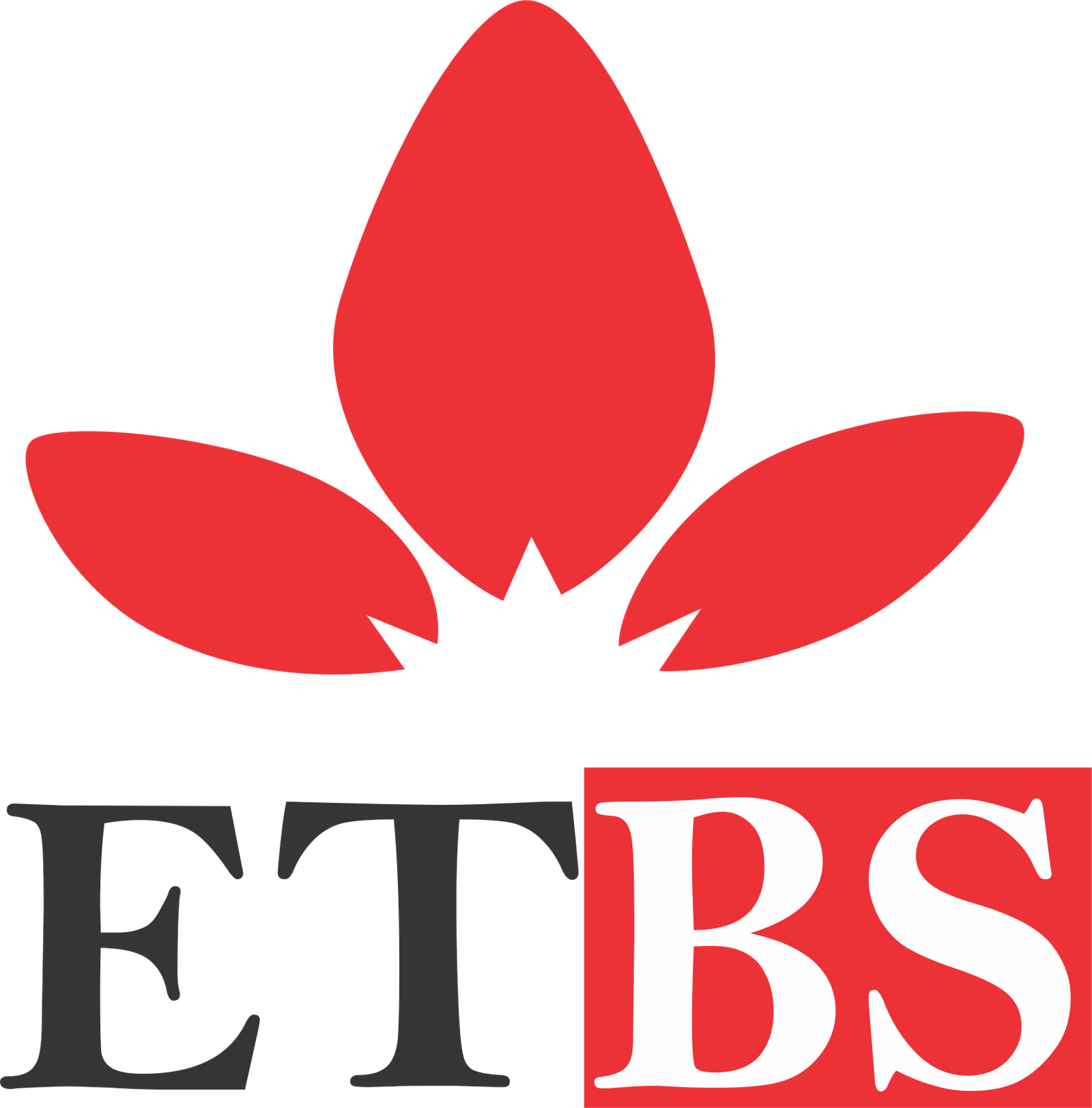 EarthTab Business School
EarthTab Business School
☰
|

This course trains practitioners to design, launch, optimize and scale online stores that convert visitors into customers and turn customers into repeat buyers at efficient unit economics. It blends e-commerce product/operations, digital marketing, customer experience (CX/UX), analytics & data science, and global trade/fulfillment delivered at an operator + strategist level so graduates can run a store end-to-end or lead growth teams. Below is a comprehensive program blueprint: aims, outcomes, full module map with deep topic breakdowns, practical labs and artifacts, KPIs & formulas, assessment model, capstone brief, tooling, and recommended resources. This is intentionally thorough so you can use it as the course syllabus, training manual, or curriculum playbook. Purpose: Build operator-level mastery of how to create, market, optimize and scale online stores (DTC + marketplace + hybrid) so they are profitable, resilient, and data-driven. Target learners Founders launching DTC brands or pivoting offline stores online. Growth/Performance Marketers tasked with scaling online revenue. E-commerce Managers / Merchants / Ops leads. Product managers and analysts working on e-commerce products/features. Consultants and agency strategists who run paid/search/email/technical programs. Prerequisites Basic digital marketing familiarity (SEO, email, paid ads) helpful but not required. Spreadsheet literacy. Willingness to work with real stores or sandbox accounts. By course end, you will be able to: Architect an online store proposition, choose the optimal platform (Shopify / WooCommerce / headless), and configure catalog, tax, shipping and payments. Build data-driven customer acquisition funnels across organic (SEO, content), paid (search, social), and partnerships (influencers, affiliates). Design conversion optimized product pages and checkout flows using UX, CRO and trust signals. Implement retention systems: email flows, loyalty, subscription offers, and on-site personalization. Measure and optimize marketing with clear KPIs and unit economics (CAC, CLTV, Payback, ROAS, AOV). Scale internationally: localization, cross-border tax, multi-currency, and global logistics. Integrate operational processes (inventory, fulfillment, returns) and fraud prevention to protect margins. Create a 90-day growth plan and present a data-backed forecast and dashboard. The course is organized into 10 modules. Each module includes theory, frameworks, worked examples, labs (hands-on), a mini-project, and 5 MCQ quiz questions. Core objective: Understand the landscape, business models, and strategic choices that determine long-term economics. Topics History & modern landscape of commerce (marketplaces, DTC, wholesale, omnichannel). Business model taxonomy: Single SKU DTC, multi-SKU marketplace, subscriptions, dropship, private label, white-label, wholesale B2B. Value chain & unit economics overview: gross margin, contribution margin, fulfillment cost, returns impact. Channel strategy: direct vs marketplace vs retail partnerships. Legal basics: consumer protection, terms of service, privacy principles. Lab / Artifact Business model choice memo + unit economics sketch (breakeven analysis, contribution per order). Core objective: Select and configure a platform that matches strategy (rapid MVP vs scale / headless) and set up foundational store infrastructure. Topics Platform comparisons: Shopify (SaaS) vs WooCommerce (WP) vs Magento vs headless (CommerceTools, custom). When to go headless. Catalog architecture: SKUs, variants, bundles, kits, UPCs, taxonomy, faceted filters. Payments & security: PCI DSS basics, payment gateway selection, multi-currency, payment routing, fraud scoring. Domains, hosting, SSL, site speed fundamentals, CDN, image optimization. Basic integrations: ERP/Inventory, CRM, PIM tools, analytics instrumentation (GA4, server side). Lab / Artifact Build a working product catalog and configure payments + shipping rules in a sandbox store. Core objective: Price for conversion and margin; define assortments and SKUs with profitability in mind. Topics Pricing models: cost-plus, competitor indexing, value-based pricing, psychological pricing (charm, anchoring), dynamic pricing & promo cadence. Assortment planning, SKU rationalization, margin waterfalls. Bundles, cross-sells, quantity discounts, subscription vs one-time purchase economics. Inventory costing methods (FIFO, LIFO, weighted average) and impact on margins. Lab / Artifact Price test plan + elasticity hypothesis for 3 SKUs; example A/B test plan. Core objective: Drive scalable organic traffic tailored to transactional search intent and product discovery. Topics Technical SEO for e-commerce: canonicalization, hreflang, pagination, site architecture, crawl budget. Transactional keyword research (product + intent), category SEO, and product descriptions that convert. Structured data (schema.org Product), rich results, merchant feed optimization. Content strategy: category guides, buying guides, comparison content, user-generated content (UGC). International SEO: hreflang, ccTLD vs subfolder decisions. Lab / Artifact Keyword map + content brief for top 3 categories + technical SEO audit. Core objective: Build high-performing paid funnels; optimize to ROAS and unit economics. Topics Paid search (Google Ads) for e-commerce: shopping feed, Smart Shopping vs Performance Max, PLAs, negative keywords, bidding strategies. Paid social (Meta, TikTok, Pinterest): creative best practices, lookalike audiences, TOF/MOF/BOF funnels. Programmatic and retargeting; prospecting vs retargeting budgets. Attribution and incrementality testing (holdout groups, geo tests). Budget allocation: LTV vs CAC targeting, scaling rules and iOS/ATT implications. Lab / Artifact Draft a 90-day paid media plan with channel splits, creative themes, and forecasted CAC/ROAS. Core objective: Systematically improve on-site conversion with UX, trust, and experimentation. Topics CRO funnel decomposition: Visit → Product View → Add to Cart → Checkout → Purchase. Shopping/PD pages: hero, primary CTA, price clarity, scarcity, social proof, shipping cost messaging. Checkout optimization: progress bars, guest checkout, payment methods, friction removal, mobile checkout patterns. Trust & reassurance: SSL, reviews, returns policy, trust badges, delivery estimates. Experimentation framework: hypothesis, sample size, significance, duration, multi-armed bandits. Lab / Artifact A/B test plan for checkout flow; wireframe for optimized product page. Core objective: Create systematic retention flows that maximize CLTV and reduce churn. Topics Welcome series, abandoned cart, browse abandonment, post-purchase flows, win-back campaigns. Segmentation & personalization: behavioral, RFM, lifecycle stage. Loyalty and subscription programs design. Deliverability best practices, sender reputation, DKIM/DMARC/SPF. Measurement: repeat purchase rate, retention cohorts, LTV forecasting. Lab / Artifact Implement a 5-flow automation roadmap (content + triggers + metrics) for a sample store. Core objective: Design fulfillment and return operations that protect margins and customer experience. Topics Fulfillment models: in-house, 3PL, dropship, hybrid. Shipping pricing strategies (free shipping thresholds, shipping zones, DDP vs DDU). Returns & reverse logistics: cost control, quality checks, refurbish/resell channels. Fraud prevention and chargeback management (AVS, 3-D Secure, velocity rules). Inventory planning: safety stock, reorder points, lead times, ABC analysis. Lab / Artifact Create a fulfillment decision matrix and returns policy optimized for cost and CX. Core objective: Make data-driven decisions using event tracking, cohort analysis and predictive modeling. Topics Instrumentation: GA4 ecommerce events, server-side tracking, data layer best practices. Core KPIs and formulas (see full KPI section below). Cohort & retention analysis, funnel conversion attribution, churn modeling. LTV modeling, payback period, unit economics, sensitivity analyses. Predictive use cases: propensity to buy, next best offer, dynamic pricing, inventory forecasting. Lab / Artifact Build a KPI dashboard in Data Studio (or similar) with cohort view and payback calc. Core objective: Plan for profitable scale, multi-market rollouts, and emergent tech adoption. Topics Growth playbooks: scaling paid, organic growth loops, partnerships, marketplaces. Market selection matrix for international expansion (TAM, logistics, payments, compliance). Localization: language, pricing, content nuance, local payments. Emerging tech: headless commerce, PWA, AR product try-ons, voice shopping, metaverse storefronts. Organizational scaling: structure, hiring, RevOps for e-commerce. Lab / Artifact Global expansion plan for one target market with legal, tax, and logistics checklist. Per module Short quiz (5 MCQs). Hands-on lab submission (operational artifact). Peer review on at least one artifact. Mid-course Halfway project: launch a paid test (mock or live) with basic funnel and report. Final Capstone (major deliverable, detailed below) + 50-question final exam (covering all modules). Oral defense/presentation (board-style readout). Rubrics Labs graded on: clarity, correctness, data grounding, feasibility, and presentation. Capstone rubric covers strategy, execution plan, financial modeling, risk mitigation, and defensibility. Objective: Launch and scale a niche online store to £50k/month ARR (or equivalent) within 12 months projected present a 90-day operational launch + 12-month forecast. Deliverables Market & competitor analysis + ICP and buyer personas. Platform selection, store architecture, & product catalog. Go-to-market plan (SEO + Paid + Email + Social) with 90-day tactical calendar. Unit economics model (CAC, CLTV, Payback months, gross margin). Fulfillment & returns plan, legal/compliance checklist for primary market. KPI dashboard prototype & 6-month growth forecast. Risk matrix & mitigation plan. Presentation: 20-minute board-style pitch + 10 Q&A. Use these as canonical formulas and ensure instrumentation can compute them reliably. Traffic → Revenue ladder Conversion Rate (CR) Average Order Value (AOV) Customer Acquisition Cost (CAC) Customer Lifetime Value (CLTV or LTV) — cohort approach Payback Period (months) Return on Ad Spend (ROAS) Gross Margin % Repeat Purchase Rate Churn Rate (subscription) Unit Economics Store & Platform: Shopify, Shopify Plus, WooCommerce, Magento, BigCommerce, CommerceTools (headless). Blended: video lectures + readings, weekly live clinics, hands-on labs, peer workshops. Artifact-first: each module produces a living document/tool that can be reused in real projects. Red-team reviews: peer critique sessions for GTM plans and capstones. Industry panels: guest sessions from brand managers, 3PL heads, Google/Meta ads specialists. Week 1: Module 1 & 2 : business model and store setup (labs: sandbox store). Week 2: Module 3 & 4 : product/pricing & SEO. Week 3: Module 5 : paid acquisition deep dive. Week 4: Module 6 : CRO, UX & experiments. Week 5: Module 7 : email & lifecycle automation. Week 6: Module 8 : fulfillment & fraud. Week 7: Module 9 : analytics & cohort analysis. Week 8: Module 10 : scaling + internationalization. Week 9: Capstone work & mentor clinics. Week 10: Capstone presentation + final exam. (Extend to 12 to 16 weeks if part-time or for deeper labs.) Setup checkout variants and measure cart abandonment baseline. Run a small paid test (e.g., £500) and report CAC/ROAS and insights. SEO content piece that ranks for a mid-volume keyword (or detailed brief + distribution plan). A/B test experiment implementable with sample size calculation. Build retention lifecycle map and project revenue uplift from +5% retention. GDPR / CCPA compliance for tracking and email consent. PCI DSS compliance for payments; careful handling of tokenization. VAT / GST for cross-border sales; marketplace VAT rules (OSS / IOSS in EU). Consumer rights: returns windows, refunds, cancellations, digital goods policies. Intellectual property: product imagery, copyrighted copy, brand claims. Headless commerce architecture & API design. Marketplace management (selling on Amazon, Walmart, Jumia). Retail media & first-party data monetization. Subscription & membership platform economics. Sustainability, carbon neutral shipping, and circular commerce models. Books E-commerce 202x: Strategy & Practice (practical modern edition) Hooked by Nir Eyal (user behavior & retention) Lean Analytics by Croll & Yoskovitz (metrics & experiments) The Elements of User Experience by Jesse James Garrett Blogs & Sites Shopify Merchants Blog, Klaviyo Blog, Reforge (growth), A Better Lemonade Stand (startups), Andrew Youderian (e-commerce ops). Courses / Docs GA4 e-commerce guides, Google Merchant Center docs, Stripe & Adyen integration docs. Practical competence: working store or sandbox with functioning flows. Business sense: credible unit economics and go-to-market plan. Analytical rigor: KPI dashboard and cohort analysis. Execution culture: running an experiment and iterating on learnings. Live or staged product catalog + checkout with tracking. 90-day acquisition calendar (paid + organic + email) with budget and expected CAC/ROAS. SEO content map and one executed piece. CRO experiment plan & wireframe. Retention lifecycle flows (Klaviyo/ActiveCampaign sequences). Fulfillment & returns playbook. Final capstone GTM + financial model + dashboard. Intensive version: 10 weeks × 6 to 8 hours/week => ~60 to 80 hours + capstone 20 hours. Extended/professional version: 12 to 16 weeks × 4 to 6 hours/week => ~80 to 120 hours. This program goes beyond “how to run ads” or “how to set up Shopify.” It integrates strategy, operations, and data so students can reason about profitability at scale, manage real operational risks (fulfillment, returns, fraud), design scalable acquisition funnels, and build the dashboards and governance that let businesses grow responsibly and sustainably. I Look Forward To Congratulating You Upon Completion Of This Course.Course Title: E-COMMERCE & ONLINE STORE MARKETING
course overview:
Welcome To EarthTab Business School. My Name Is Pierre Jones And I Will Be Your Course Preceptor For The Course,E-Commerce And Online Store Marketing.
1. Course purpose & who it’s for
2. High-level learning outcomes (what you will be able to do)
3. Course architecture : modules & deep topic map
Module 1 : Foundations: E-commerce Ecosystem & Business Models
Module 2 : Platform Selection, Architecture & Store Setup
Module 3 : Product & Pricing Strategy for Online Stores
Module 4 : SEO & Content for E-commerce
Module 5 : Paid Acquisition: Search, Social & Programmatic
Module 6 : Conversion Rate Optimization (CRO) & UX for E-commerce
Module 7 : Email, Retention & Lifecycle Automation
Module 8 : Fulfillment, Logistics & Risk Management
Module 9 : Analytics, Measurement & Data Science for E-commerce
Module 10 : Scaling & International Expansion, Trends & Future Proofing
4. Assessment & artifacts
5. Capstone project (sample brief)
6. Key KPIs & formulas (operator toolkit)
Revenue = Visitors × Conversion Rate × AOV
(Write as: Revenue = Visitors × (Orders ÷ Visitors) × (Total Revenue ÷ Orders))
CR = Orders ÷ Unique Visitors
AOV = Total Revenue ÷ Orders
CAC = Total Marketing & Sales Spend for period ÷ New Customers Acquired in period
LTV (simple subscription formula) = ARPA × Gross Margin % ÷ Churn Rate
(For non-subscription, LTV = AOV × Purchase Frequency × Average Customer Lifespan)
Payback = CAC ÷ (Monthly Gross Margin Contribution per Customer)
ROAS = Revenue attributed to Ads ÷ Ad Spend
Gross Margin % = (Revenue − Cost of Goods Sold) ÷ Revenue × 100
Repeat Rate = Customers with >1 purchase ÷ Total Customers
Churn = Customers lost in period ÷ Customers at start of period
Contribution Margin per order = AOV − COGS − Fulfillment Cost − Variable Marketing Cost7. Tools & tech stack (recommended)
Payments: Stripe, Adyen, PayPal, local PSPs (Paystack, Flutterwave).
Analytics: GA4, BigQuery, Looker Studio, Mixpanel.
Email/Automation: Klaviyo, ActiveCampaign, Mailchimp.
Ads & Social: Meta Business Manager, Google Ads, TikTok Ads, Pinterest Ads.
Search & SEO: Semrush, Ahrefs, Screaming Frog.
CRO & Personalization: Optimizely, VWO, Google Optimize (or alternatives), Nosto.
Fulfilment: ShipStation, Shippo, 3PL integrators, FBA (Amazon).
Product & Inventory: TradeGecko/DEAR (now in QuickBooks), SkuVault.
CRM / RevOps: HubSpot, Salesforce.
Fraud & Security: Sift, Riskified, 3-D Secure, ClearSale.
Headless / Frontend: Next.js, Gatsby, PWA frameworks.8. Pedagogy & delivery format
9. Weekly schedule (example for a 10-week intensive)
10. Typical assignments & practical checks
11. Compliance, privacy & legal considerations
12. Advanced topics & elective deep dives (pick for extended programs)
13. Reading list & learning resources
14. How success is measured for learners
15. Example deliverables (what students take away)
16. Estimated time investment
17. Final note : what makes this course advanced

Unlocking Professional Potential through world-class assessments and industry-ready training.
"Empowering Professionals through practical, accessible online business education"
- Blessing Princess Agho
 Founder/Lead Instructor
Founder/Lead Instructor